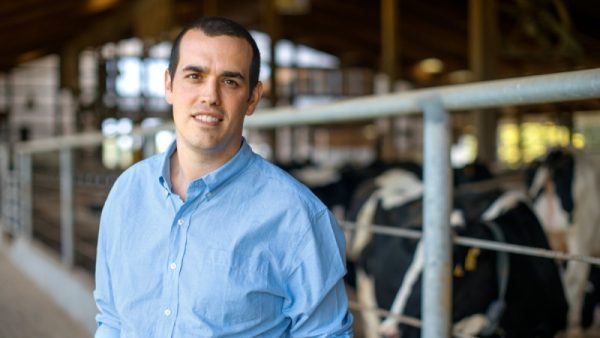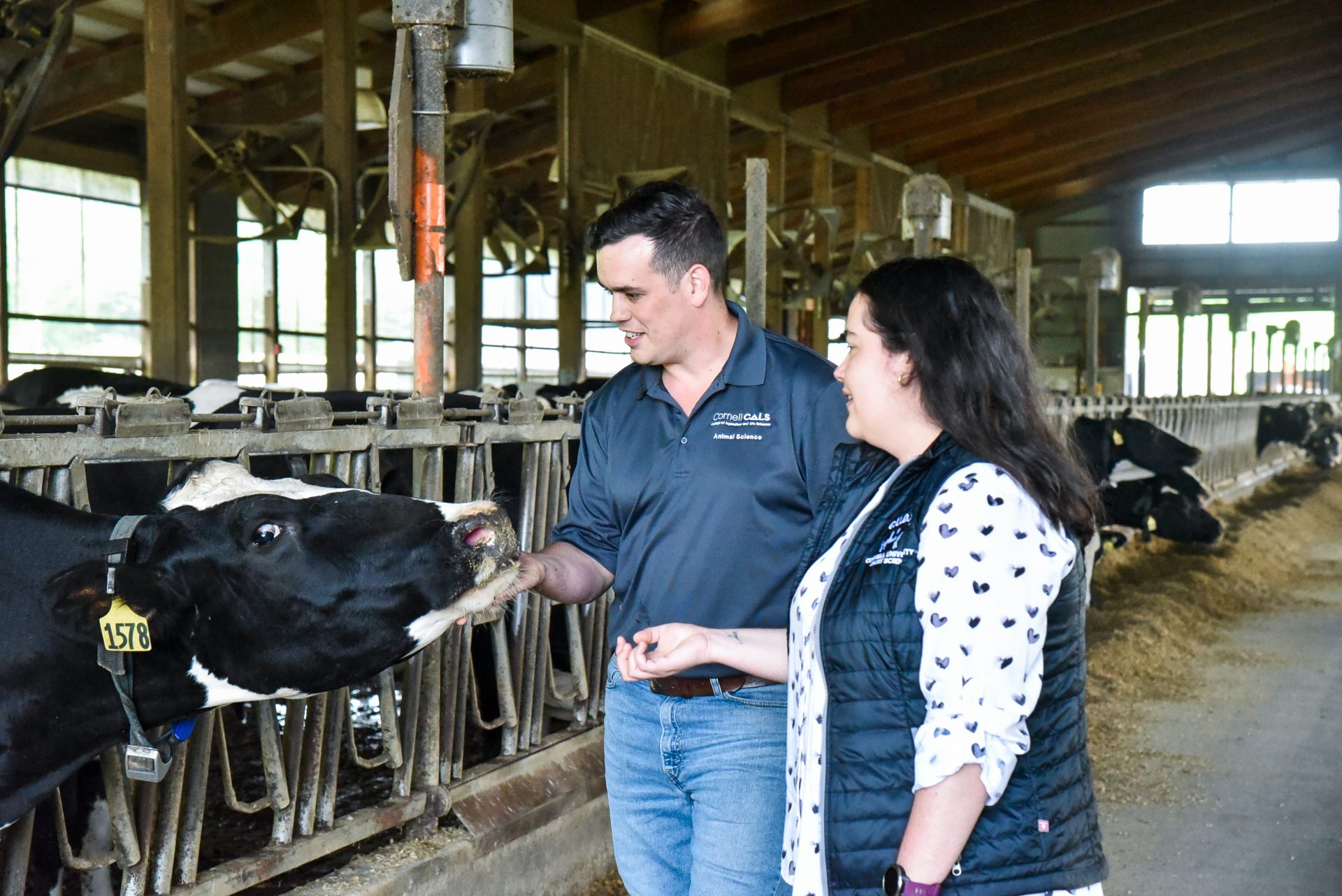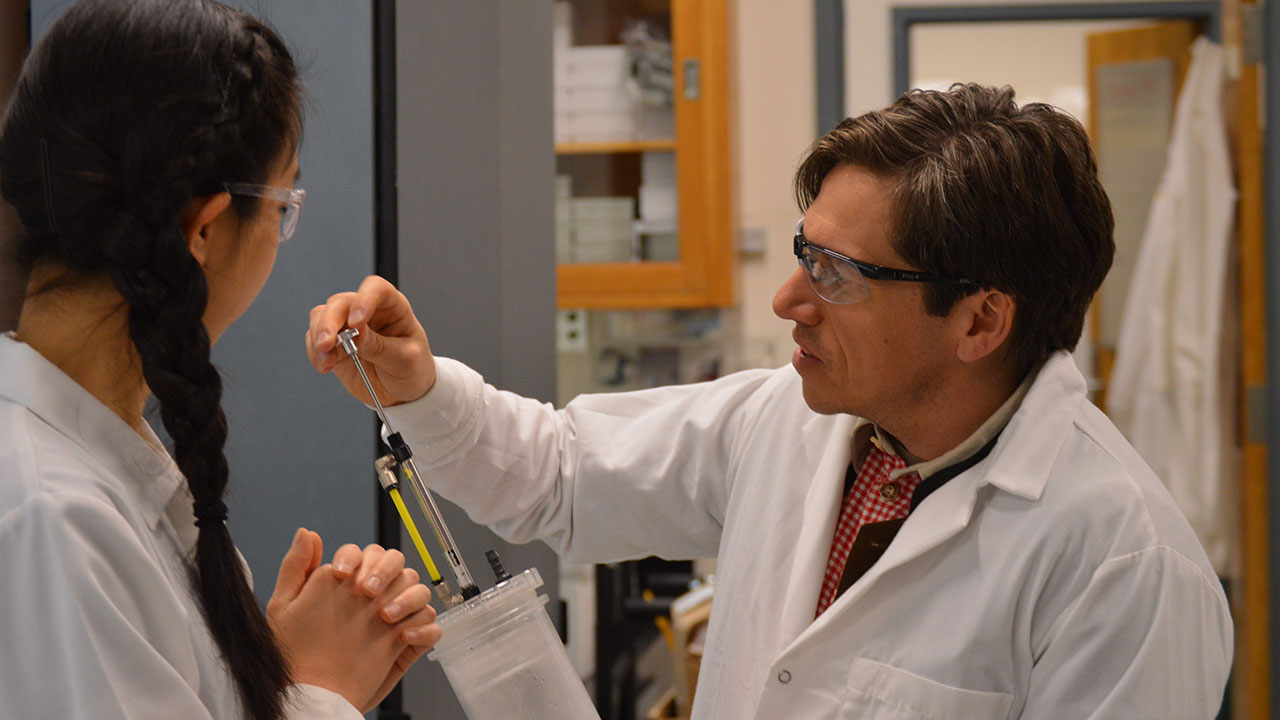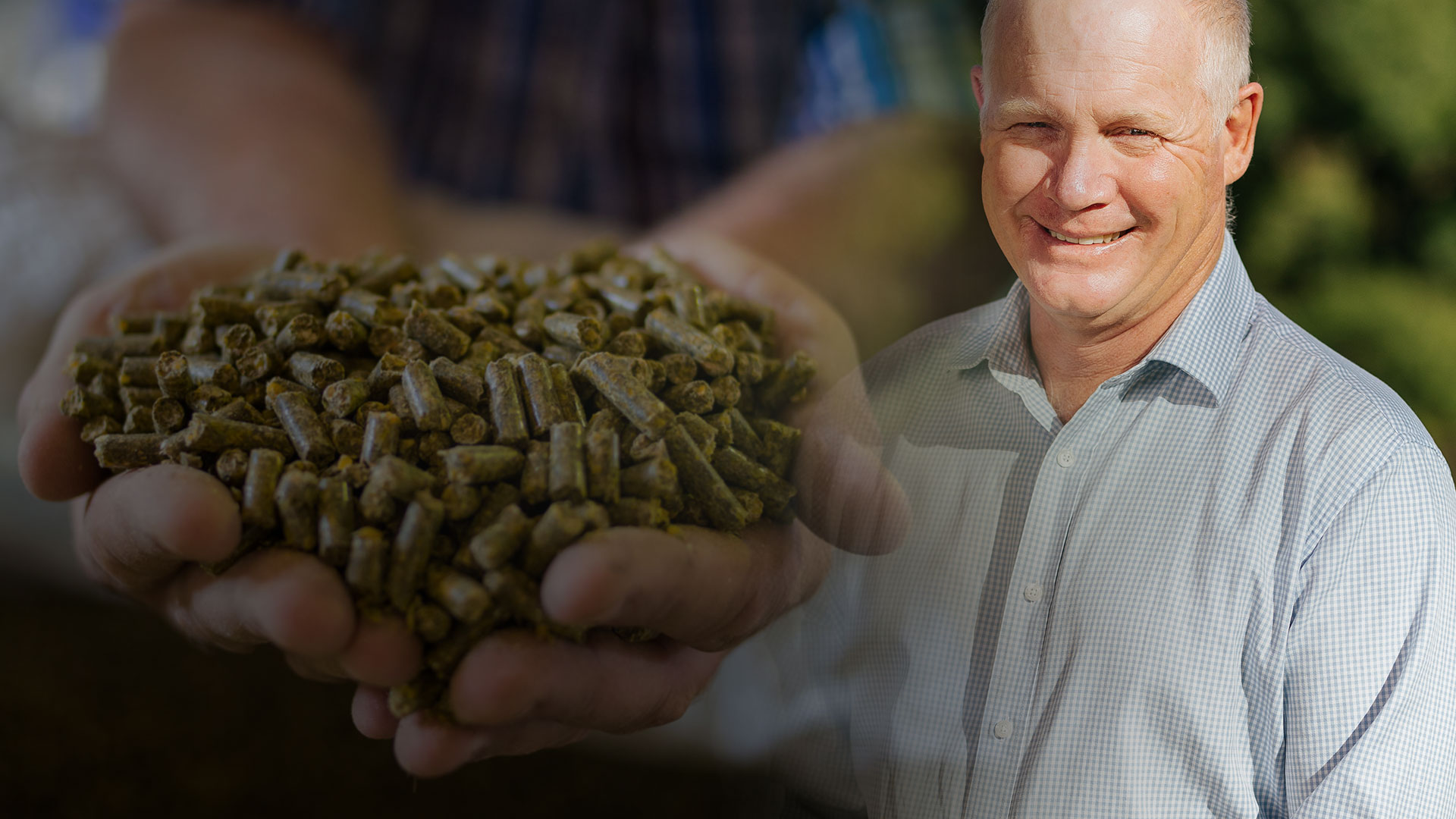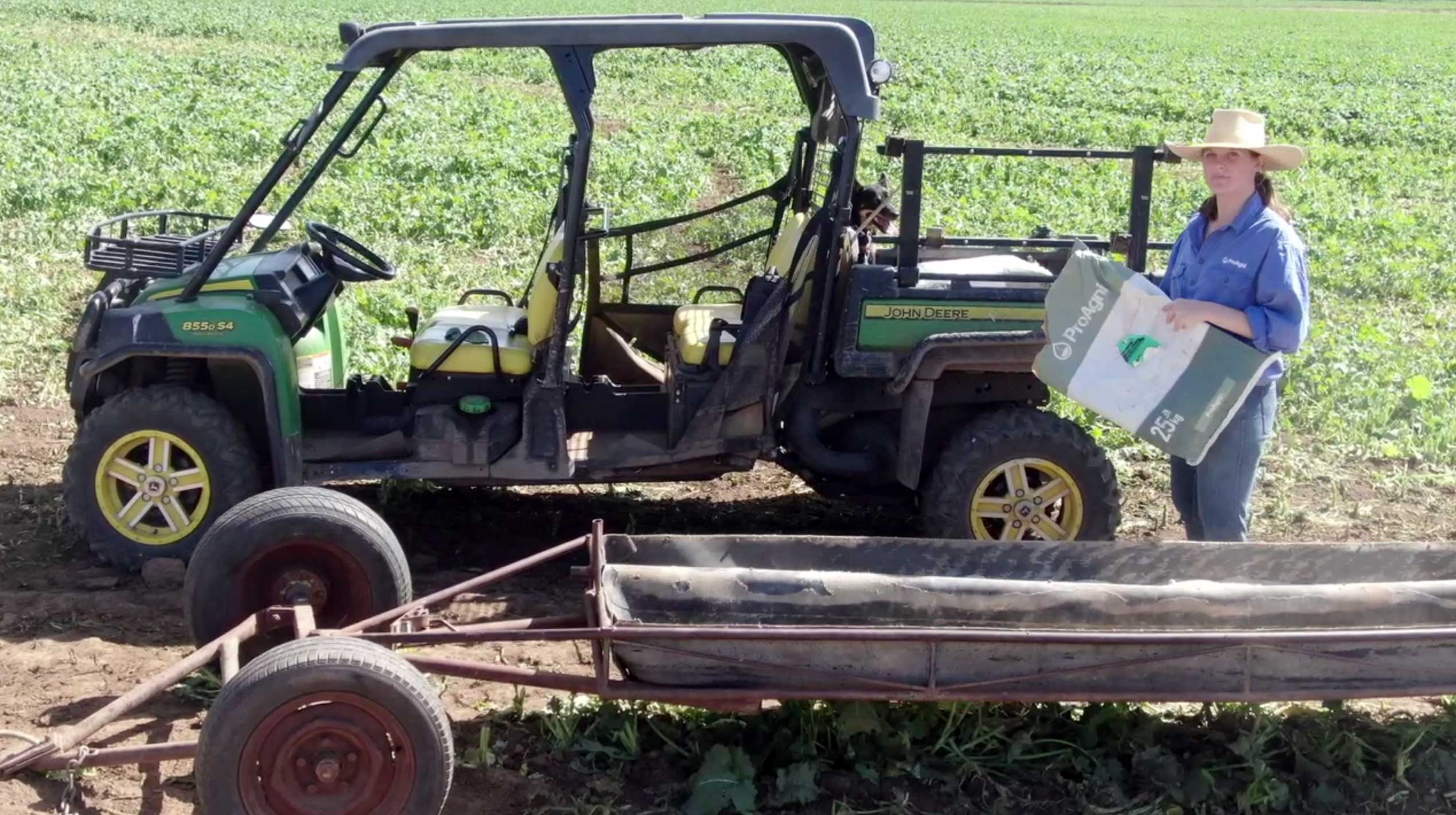By Ash Sweeting
Dr Matthias Hess has been spearheading the assessment of compounds and feed additives for their impact on cattle methane emissions in the United States. Matthias is a microbiologist in the department of animal science at UC Davis where he has spent the last 8 years looking into the ruminant microbiome to better understanding how these different microbes breakdown complex plant materials into smaller molecules that can be utilized by the animal.
Matthias current work is leading research focused on understanding the biochemistry of how these microbes convert plant materials into small molecules that can be utilized by the animal. A huge part of his work is looking at the production of undesirable metabolites and especially methane with the aim of finding solutions to how methane emissions can be reduced.
The exciting news is that his team is using new techniques including DNA, RNA, and protein analytics to understand the microbial processes in the rumen on a molecular level. This is leading to a much better understanding of not just the species of bacteria, archaea, and also fungi in the rumen, but more importantly how they interact, what activates these microbes, and the intracellular communications that control what genes are switched on at any point in time.
Ultimately, as methane production is an energy inefficiency within the ruminant digestive system Matthias thinks solutions that solve the methane problem will also increase protein production. That said, because of the complexity if the rumen microbiome it is highly probable that there will be different solutions for not different production systems, grazing and fed animals, and also for different environments.
I recently caught up with Matthias to hear more about his work, where he sees the greatest potential for progress and what’s needed to move from the laboratory into animal production systems. Our conversation was edited for clarity and length.
AS
How complex is methane production, how many processes are involved in creating methane, and does the complexity mean there are more opportunities for interventions to reduce methane emissions?
MH
That’s a good question. Yes – unfortunately there is not a one-fits-all solution. Think about the fact that the rumen microbiome evolved over 1000s and 1000s of years to digest very different plant materials. The microbiome has the ability to adjust its metabolic process to degrade and metabolize the different feeds. So if you develop a solution for one diet and it might not work for a diet that is significantly different.
AS
Where do you see the most exciting opportunities to mitigate methane?
MH
I think what is really exciting is that we have new techniques that allow us to investigate microbes we have not been able to study in the past. Historically, people have been relying on the ability to isolate, cultivate and subsequentially study microbes in the laboratory and that left only a rather limited number of rumen microbes to study. Now, there are techniques where you can actually extract different biological molecules, such as DNA, RNA and protein, from your sample without the need to isolate and grow the microbes they come from in the laboratory. With the information we obtain from these molecules we can determine which microbes are there and then try to understand what these microbes do in their natural habitat.
In the past, people have been mostly working on rumen bacteria, and to some extent on other microbes that are called archaea. There are microbes that are responsible for methane production. With the new technologies mentioned earlier we can now also study rumen fungi. It was not until recently that we understood that fungi can grow in the absence of oxygen and that these rumen fungi are really efficient in degrading plant material that comes into the rumen. So it’s only over the last couple of years that we are starting putting together the more complete picture of the different aspects that really make the rumen such an efficient system for converting plant material into molecules that can be used by the ruminant animal.
AS
I wasn’t aware of the rumen fungi. How important are they?
MH
We know that there are quite a few, but we don’t necessarily know exactly since this remains a relatively unexplored area. Until about three years we thought that there would be only 4-5 phylogenetic groups. Now we think that there are at least eight.
AS
Is it the presence of microbe species or the relationships and interactions between all these species including how they communicate that’s most important?
MH
Yes – more important than who is there – it is more important what these different players are doing and how they interact with each other. This is reflected in the data we obtain when we track these communities and their function over time. Different organisms have different functional roles at different times.
When you look at DNA, RNA or proteins you get a snapshot in time and in space – and you see differences in space, but also in time. For example, when we looked at the different microbial proteins being produced, we could see that enzymes contributed by fungi and by bacteria differed from each other. Interesting is that we know that bacteria also produce enzymes that were produced by the fungi at this time point – but they seem to be just not be produced by the bacterial population at this particular moment.
Keep in mind that may of these rumen fungi are filamentous, which means that they grow long filaments very slowly, but they are also really capable of penetrating the biomass really deeply. The assumption is that the bacteria tried to colonize relatively quickly and break down some of the easily accessible sugars. Whereas the fungi started to grow slowly and penetrated the plant materials – especially those fractions that are not easily accessible to the bacteria who colonized the plant material first.
AS
Talking about the different microbes there needs to be some form of intracellular communications or stimulus to turn certain genes off or turn certain genes on. How do you see that space? And is there any, any indication that one of those areas is showing more promise in terms of being able to adapt the fermentation than in the others?
MH
That’s the million dollar question. What I believe to be the most promising field is to take material that’s already generated and that is currently considered to be waste. For example food waste or agricultural waste and that we could convert into a value added feed additive.
Either direct feeding or extracting chemicals or small molecules from the food waste is highly promising. I would love to see the area going both ways since this would solve two problems at the same time: we would upgrade food waste or waste in general and utilize it to improve protein production.
AS
Do you see there being the same solution for grazing animals as well as fed animals or do you think there’s going to be two different approaches for those different production systems?
MH
I think it will that solutions will be different. If you think about animals that you have in a feedlot, you can just basically add some feed additives, right? You can’t have that for grazing animals. The solution might need to be either vaccine based solution or something that you can add to the drinking water.
I think even within the same animal system, for grazing or feedlot systems, there will be different solutions depending on where you are. So again, this is a more complex problem that requires a multi-dimensional solution.
And I think the other thing we need to think about is that as important as it is to reduce methane emission we also need to think about how we can convert the feed into more protein.
AS
Back to the rumen microbiome because the methane issue is essentially inefficiency from an energy perspective. How do you see the potential of reducing methane and increasing productivity?
MH
This is a great question and not one that is easy to answer. Unless there’s some direct benefit on the productivity side, it will not be feasible to put any methane reducing solution into application. In order to make it to the market potential solution will have to be economical. In other words, the solution needs to reduce methane and at the same time increase the amount of protein that is produced per amount of feed. Although this is a huge challenge, with all the new technologies and the interdisciplinary work that is underway this is not an unreasonable goal.
AS
If you had the open checkbook and access to whatever equipment and whatever team you wanted to throw out this what would you look at doing?
MH
Ha – I would call that a trick question. More realistically, and hoping that more funds will continue to come in I would like to expand on what we are doing right now and to try to figure out what is actually happening on the molecular basis in the rumen ecosystem. So in essence to figure out what are the molecules that are basically being transitioned between different microbes and how this affects the rumen function and eventually the rumen output, such as methane and protein.
I think that it’s not too lofty of a goal. In fact we’re getting pretty close to being able to do this.
